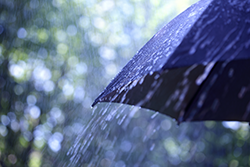
During a downpour, dirt, oils, and other water pollutants are being filtered by approximately 20,000 Stormceptor units worldwide. While the Stormceptors patented scour system keeps the pollutants safely contained during all rainfall activity, they must eventually be emptied as part of a regular maintenance program. If neglected, the accumulated pollutants can build up and diminish the units effectiveness. As a result, harm could come to the environment and leave the owner or operator of the unit open to surcharges and fines. Not to mention, a bit of bad publicity as well.
Maintenance Is Key
Regular maintenance is a must to keep any storm water treatment unit running at its best, however it is often overlooked. While maintenance of your Stormceptor should be a regular practice, it need not be a complicated one. The inspections are quick and carried out above ground, eliminating need for entry into the unit itself. They can be done through any standard access cover, needing only an oil dip stick and a sludge judge to test the buildup.
Maintenance Recommendations
- The Stormceptor unit should be inspected once installation is complete, before it is put to use.
- The unit should be inspected twice during its first year of operation, or once every six months.
- In the years following, a maintenance schedule can be made based off either the first year observations or local requirements.
- Once the sediment depth reaches 15% of the units storage capacity, it must be cleaned out. Regional requirements for this may vary, but it should generally take a year to reach this capacity.
- Immediately following a fuel, oil, or chemical spill, the unit should be inspected.
- The waste products contained within the Stormceptor should be collected and properly disposed of by a licensed waste management company.
Regular maintenance of your Stormceptor will ensure that it continues functioning at its finest for years to come, saving you time, money and stress in the long run. If you would like to know more about Stormceptors and their operation or maintenance, feel free to contact us.
